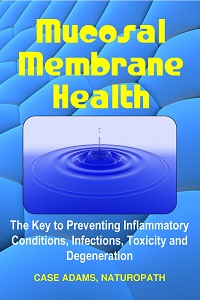Magnesium Required for Vitamin D Supplements

Avocados are high in magnesium (about 64 mg per avo).
It turns out that just taking vitamin D supplements in an attempt to replace the sun is wrought with complications. For many this includes simply not getting much benefit from taking vitamin D supplements. Research is now confirming that magnesium is necessary to absorb and process vitamin D from supplements.
In this article
Absorbing vitamin D supplements
The body metabolizes vitamin D produced from the sun’s contact with the skin more easily than through vitamin D supplements.
This has been shown in a number of studies relating to vitamin D deficiency. Studies have shown vitamin D supplementation doesn’t necessarily help conditions worsened by vitamin D deficiency. Some of these studies have included rickets studies. Rickets, as you may know, is a serious bone disease that centuries ago was found related to a lack of sun exposure in children (in adults, the condition is called osteomalacia).
Indeed, sun exposure did reverse or cure the disorder in numerous studies and case findings over the centuries.

Learn the benefits of the sun and how to help prevent skin cancer while supporting this ad-free website.
But once the research connected vitamin D to rickets and osteomalacia, vitamin D supplementation has replaced sunlight exposure in many clinical treatments. The only problem is that supplementation doesn’t always work – at least to the degree of success that sunlight exposure has had on the disorder.
Thus many cases of rickets and osteomalacia have been identified as “vitamin-D resistant.”
Really, what they should be referring to is “vitamin-D supplementation resistant.” This is because the body has far less resistance to the vitamin D produced through sun exposure.
That said, if you cannot get enough sun exposure, or if it is winter and you live in the northern or southern latitudes, then you may need to supplement in vitamin D. How can we make this work?
Magnesium missing link
Research published in 2018 from Harvard University has confirmed that vitamin D metabolism is dependent upon magnesium. And apparently, vitamin D supplementation requires additional magnesium in order to convert the inactive forms of vitamin D – D2 and D3 – into the active form. This biologically active form is technically referred to as 1,25-dihydroxyvitamin D (also abbreviated to 1,25(OH)2D).
In order to convert to the active form, vitamin D2 and D3 (ergocalciferol and cholecalciferol respectively) must first be transported to the liver using vitamin D–binding protein. At least for the supplement forms, this step requires magnesium.
Then once reaching the liver, the cholecalciferol is then converted to calcifediol (25-hydroxyvitamin D) by the liver. From there is it converted to the its final active form – calcitriol (1,25-dihydroxyvitamin D) – in our kidneys. Both of these conversions also require magnesium.
The latter two processes also require calcium to process, although research has found this is not as critical as magnesium. This may be that calcium deficiency is much less prevalent than magnesium deficiency. And the body typically contains more calcium than magnesium. And more foods tend to contain more calcium than magnesium.
An adult body contains about 25 grams of magnesium and about 1,000 grams of calcium.
The bottom line is that if you are going to take vitamin D supplements, then you should also make sure you have enough magnesium in your diet or are supplementing with magnesium.
How to avoid magnesium deficiency
As mentioned above, research has confirmed that one of the reasons why many are deficient in vitamin D – besides poor sun exposure – is due to our modern diets being deficient in magnesium.
Magnesium is prevalent in many whole foods and fresh fruits and vegetables. Foods particularly rich in magnesium include bananas, avocados, chia, whole grains, beans, legumes, nuts and green leafy vegetables.
But many processed foods are lacking in magnesium. For this reason, many modern diets are deficient in magnesium.
In addition, because farming has become increasingly fertilized with chemicals, even our fruits and vegetables have less magnesium. A UK study that tested magnesium between 1940 and 1991 found that magnesium levels decreased by 24 percent in vegetables and 17 percent in fruits. It’s likely gotten worse since then.
Recommended intake of magnesium is 400-420 milligrams a day for men and 310-320 milligrams a day for women.
The Linus Pauling Institute of Oregon reports findings that taking more than 350 milligrams per day of supplemental magnesium can have adverse effects. This is because most diets and most drinking water will contain some magnesium. This means that more than 350 milligrams a day on top of our diet and water consumption will produce negative side effects.
Magnesium sulfate is probably the best-absorbed form of supplemental magnesium.
I should note that this is one of the dangers of drinking distilled water: Much of the magnesium is filtered out, and magnesium is essential for healthy water absorption.
Other research has found that magnesium helps reduce obesity and diabetes, helps prevent the flu and reduces the risk of stroke.
The bottom line is if you are taking vitamin D supplements, make sure you also have enough magnesium in your diet to absorb and metabolize that vitamin D.
In terms of supplementing vitamin D, many nutritionists agree that healthy doses of vitamin D range about 4,000 IU per day or even higher. If you are getting good UVB in your sun exposure then you are most likely getting this and more.
REFERENCES:
Uwitonze AM, Razzaque MS. Role of Magnesium in Vitamin D Activation and Function. J Am Osteopath Assoc. 2018 Mar 1;118(3):181-189. doi: 10.7556/jaoa.2018.037.
Swaminathan R. Magnesium metabolism and its disorders. Clin Biochem Rev. 2003 May;24(2):47-66.
Anast CS. Magnesium studies in relation to vitamin D-resistant rickets. Pediatrics. 1967 Sep;40(3):425-35.
Magnesium. Linus Pauling Institute – Micronutrient Information Center. Oregon State University.


















